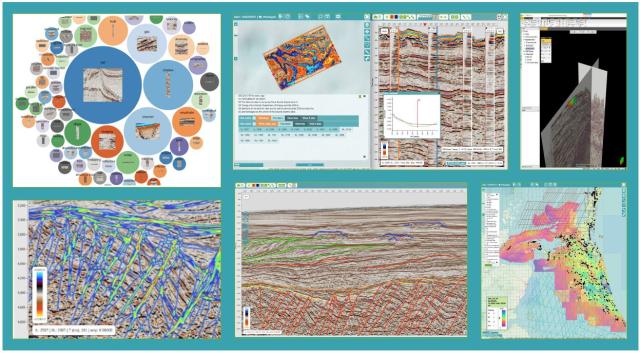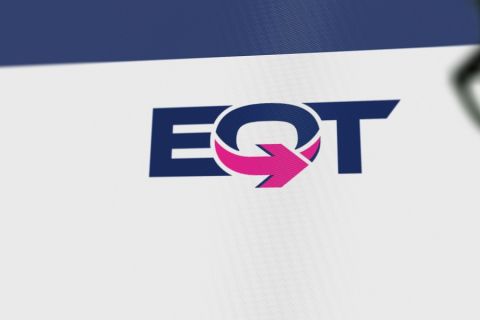
(A look into Osokey Stream, a cloud-based solution for seismic data. Images provided by Joseph Nicholson/ Osokey Ltd.)
[Editor’s note: This is the first in series of articles looking at emerging technology in energy.]
Seismic portfolios in the industry are taking a new direction—up, to be specific—with Osokey Stream. The cloud-native data management solution leverages storage from the public cloud.
Osokey Ltd.’s seismic in the cloud technology was cultivated as a means to resolve geologists’ frustration with seismic and subsurface workflows, according to the company’s head of operations Joseph Nicholson. Osokey aimed to break down siloed seismic data to ultimately manage its abundance more effectively.
(A look into Osokey Stream, a cloud-based solution for seismic data. Images provided by Joseph Nicholson/ Osokey Ltd.)
“The goal really is to enhance the existing subsurface workflows to get people connected to data faster so they can analyze more data, which improves business decisions and frees them up to do more analysis rather than boring tasks,” Nicholson said. “Also, to automate a lot of the workflow with machine learning to enable geoscientists and subsurface data managers to focus on value-added workflows rather than workflows that tie up resources unnecessarily.”
Working in collaboration with Chevron Corp. and the Oil & Gas Technology Centre (OGTC), the live project traffics Chevron’s 2-D and 3-D and pre-stack seismic—currently from the North Sea—into a “highly scalable” repository to be utilized globally on cloud hosted workstations. The project is expected to finish summer 2019, Nicholson said.
Osokey’s ‘serverless’ approach eliminates traditional storage routes for seismic data and has been able to improve access to pre-stack data.
“Historically, seismic data is very big in terms of its volume and the memory it requires, so it is siloed. Often a lot of the data is archived on magnetic tapes so it’s no longer online,” he said. “By utilizing public clouds you enable far greater levels of data accessibility, and in the same way we use Netflix or Google Docs, we can start accessing data from anywhere through a web browser whereas traditionally we would need siloed applications.”
Further challenging traditional methods, Nicholson said seismic in the cloud advances and expedites seismic data discovery. The ‘serverless’ architecture offers pay as you use cloud and storage costs as opposed to the standard ‘lift and shift’ of data to workstations, where a company would pay for what they were not using.
Taking into consideration common security concerns surrounding the cloud, Nicholson said his company’s approach to the technology is safe.
“One of the pieces that we are very keen on is that companies can actually store their data in their own cloud account and provision their own data security services and that enables companies to really take control of their data,” he said. “The data is encrypted at rest and in transit, and we’re using a lot of the same technology that government agencies use.”
“It is an important conversation to have, but it is resolved quite quickly,” he added.
Drawing benefits from its collaboration with Chevron and OGTC, Nicholson said the project has been a fantastic opportunity to test the technology in other venues.
He said Osokey is currently working with the Lebanese government to leverage seismic in the cloud for its upcoming licensing round planned for next year, per Reuters.
Mary Holcomb can be reached at mholcomb@hartenergy.com.
Recommended Reading
Chord, Enerplus’ $4B Deal Clears Antitrust Hurdle Amid FTC Scrutiny
2024-04-08 - Chord Energy and Enerplus Corp.’s $4 billion deal is moving forward as deals by Chesapeake, Exxon Mobil and Chevron experience delays from the Federal Trade Commission’s requests for more information.
Daugherty: Feds Take Aggressive Posture on Oil, Gas Mergers
2024-02-01 - Newly released guidelines by the Department of Justice and Federal Trade Commission suggest that a post-deal, combined market share of more than 30% is potentially problematic.
Which Haynesville E&Ps Might Bid for Tellurian’s Upstream Assets?
2024-02-12 - As Haynesville E&Ps look to add scale and get ahead of growing LNG export capacity, Tellurian’s Louisiana assets are expected to fetch strong competition, according to Energy Advisors Group.
EQT, Equitrans to Merge in $5.45B Deal, Continuing Industry Consolidation
2024-03-11 - The deal reunites Equitrans Midstream Corp. with EQT in an all-stock deal that pays a roughly 12% premium for the infrastructure company.
Exclusive: Frank Tsuru Reflects on Indigo's History, Impact in the Haynesville
2024-04-11 - Frank Tsuru, president and CEO of Momentum Midstream and former CEO of Indigo Natural Resources, looks back at the early stages of Haynesville development and the Indigo-Southwestern deal, in this Hart Energy Exclusive interview.





